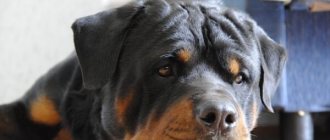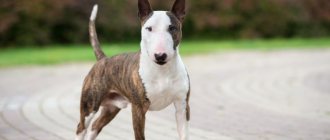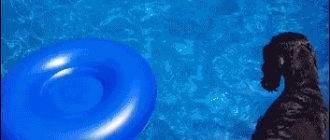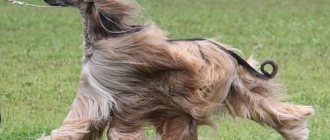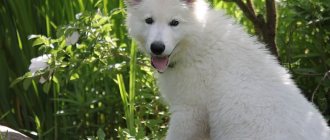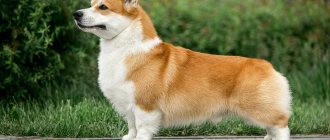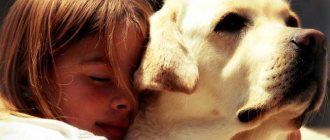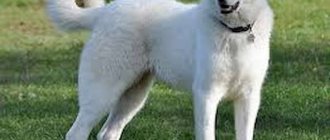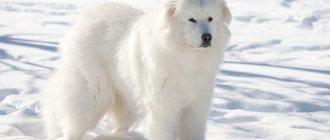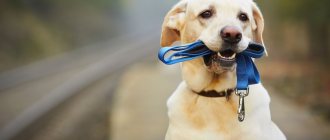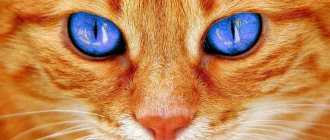When choosing a pet, it is important to consider not only its size and activity, but also the intensity of shedding. If you have a confirmed allergy or just don't want to clean more often than usual, then an abundance of hair on furniture and floors can be a real problem.
In such cases, it is recommended to pay attention to low-shedding dogs that do not shed without human help, take a long time to renew their coat, or are almost completely deprived of it.
How to choose a dog
Those who suffer from allergies to dogs primarily consider adopting a hairless breed. Among them are the American Hairless Terrier, Chinese Crested, Xoloitzcuintle, and Peruvian Inca Orchid. But in fact, this list can be expanded to include breeds that do not shed and have almost no odor, for example, Bichon Frize, terriers, Affenpinscher, Coton de Tulear, and griffins.
Another way to limit contact with fur is to choose a breed without an undercoat. This is a water spaniel, a poodle. Finally, dogs whose coat structure resembles human hair will also not cause suffering to allergy sufferers. These are Maltese, Yorkshire Terrier, Shih Tzu.
Relatively hypoallergenic dogs include hairless breeds, animals without undercoat, and those who do not salivate frequently.
The second main irritant is a substance contained in the animal’s saliva. Consider purchasing small breeds that do not cause allergies. This could be an Affenpinscher, a terrier (Australian, Bedlington), a Bichon Frize, or a Chinese Crested.
To see if a breed is right for you, check out this list of dogs that rarely cause allergies.
Hypoallergenic dogs: list of breeds suitable for allergy sufferers and asthmatics
Many people believe that dogs for allergy and asthma sufferers are a pipe dream. There are a lot of factors that provoke allergies in animal lovers: in addition to a reaction to fur, there is also an allergy to urine, drool, sweat, skin flakes, fleas and even dust brought in by animals from the street. Having identified a specific allergen, you can eliminate it by choosing the right breed.
Of course, there is no absolutely hypoallergenic dog breed, because each person’s reaction to any of them is individual.
Below is a list of breeds that are least likely to cause unusual symptoms.
Greyhound
The Greyhound is an English greyhound with a short, smooth coat. Like many greyhounds, greyhounds have a weak sense of smell, but keen eyesight and high speed over short distances. In Britain, greyhounds (the name translates as “gray greyhound”) hunted hares, reaching speeds of up to 67 km/h. Hair loss is controlled by regular brushing with a special brush. The rarity of allergic reactions, highly developed intelligence and quick learning contribute to the wide distribution of greyhounds. Excessive activity is unusual for them, so there is no need for long and active walks.
Irish Water Spaniel
The Irish Water Spaniel is a large animal with hair the structure of which is similar to human hair. A distinctive feature of the breed is its reddish-brown color, short “rat” tail and webbed feet. If you have a family with allergies, the tight curls of a Water Spaniel should be cut every two months. There is no hair loss or shedding, which is common in many other spaniels. The hunting dog's character is balanced, friendly, and he gets along well with the family. Needs outdoor games, active walks, loves to swim. Easily trained, often demonstrates playful behavior.
Bullets
Looking at such an abundance of hair on the Puli (Hungarian Shepherd), it is difficult to believe that there is no allergy to this breed. But the explanation lies in the structure of the coat. As the puppy grows, its hairs curl into thin cords, which gradually increase in volume and become elastic due to dying hairs. Not a single hair falls out of the tight dreadlock-like cords. The “bangs” falling over the eyes do not cause any inconvenience to the animals; overgrown shepherd dogs perform well in guarding the herd and hunting with the owner. Puli are smart, devoted to their family, active, and participate in competitions. They adapt to life both in the house and in the apartment. The only inconvenience is that without blow-drying after washing, dreadlocks take a very long time to dry, sometimes 3-4 days.
Other types of shepherd dogs with photographs.
Giant Schnauzer
The Giant Schnauzer is the largest representative of the Schnauzer family, which can roughly be called hypoallergenic. Risen's coat is long, hard, and has a dense undercoat. But it does not fall into tangles if it is properly cared for. Taking care of the coat is expressed in regular combing and mandatory trimming 2-3 times a year. Trimming is a necessary condition for keeping a pet in a family with asthmatics or allergies, as well as for participation in exhibitions and shows. Giant Schnauzers are loyal, devoted, full-fledged members of the family, independent and savvy, and quick to learn.
Border Terrier
Border Terriers have a hard coat with a dense undercoat. Shedding is practically absent with regular brushing. Show dogs need trimming. Border Terriers are friendly, attentive to family members and children, affectionate, love active games, and have a balanced temperament. In England and Scotland, they were used to hunt foxes and badgers; in pursuit, terriers were ruthless and brave. Today they are used not only for their original purpose, but also as companions. Border Terriers need regular jogging and active games. They also perform well in team competitions.
Irish Wheaten Terrier
The Irish Wheaten Terrier is listed as a hypoallergenic dog despite having a soft, silky, medium-length coat. It was thanks to this coat that he was identified as a separate variety of the Irish Terrier. The Soft Coated Wheaten Terrier does not shed and has no undercoat. To prevent the hairs from getting tangled, they are combed regularly. The breed lends itself well to training, as it has developed intelligence and an easy-going character, but we must not forget about the correct early socialization of the puppy. Terriers are active, energetic, and love to frolic in open areas. They get along in an apartment only with long active walks. The ideal place for keeping is a country house or farm, where Irish wheaten terriers guard the owner’s property, help with grazing, and destroy rodents.
Peruvian hairless dog
Peruvian Inca Orchid is the name given to a hairless ancient dog in Peru. There are representatives of three sizes: large, medium and small. They have no hair, do not produce dandruff, and salivation is minimal, so the Peruvian Hairless dog is a good option for a family with allergies. There are no kennels in our country; puppies are purchased abroad (Europe or the USA). Export from Peru is limited, since the breed is declared a national treasure. Keeping such a pet requires special care and attention, since it freezes in the cold, and under the sun, light skin can darken from tanning. In addition, the Inca orchid has an incomplete set of teeth (the standard allows for their complete absence), which makes it difficult to choose food. At home, the breed was bred as a greyhound, but in our country it is used exclusively as a companion. There is a woolly variety of the Peruvian dog, but we will not dwell on it for the purposes of this article.
American Hairless Terrier
The American Hairless Terrier is completely hairless, its skin does not peel off, this eliminates a negative reaction to hair and skin scales. The pet requires special care - it should not be in the sun (it gets sunburned), overheated (sweats), or run near bushes (it gets abrasions). In addition to the usual care products, in the summer the terrier will need sunscreen, and in rain or cold - several sets of shoes and clothes. Due to its lack of hair, the Hairless Terrier is used only as a companion, but this same feature helps it be considered one of the hypoallergenic breeds. The terrier is agile, energetic, gets along with children, cats, and is very active in his youth.
Whippet
The Whippet is a smooth-haired hunting dog. The whippet's short hairs change slowly, so shedding is almost unnoticeable. In England, whippets were used to hunt hares; in pursuit they can reach speeds of up to 70 km/h. Rats are also common prey for these temperamental greyhounds. Despite their elegant appearance, whippets have developed muscles, good health, and a balanced psyche. They quickly become attached to the owner's family, gentle and soft when communicating. Used as hunters, companions, athletes.
Italian Greyhound
Italian Greyhound (Italian Greyhound) is the smallest greyhound. The short-haired Italian Greyhound sheds little and has no dog smell. Suitable for families with allergies, but not with active children. Italian Greyhounds naturally have thin, fragile bones, so jumping from heights or sudden movements are contraindicated for them, which is difficult to avoid during games. Italian Greyhounds are loyal and kind, friendly, but cautious around strangers. They love to bathe (twice a month), and are calm about combing with a special brush. Unlike many phlegmatic greyhound varieties, Italian Greyhounds often growl and bark at irritating objects. Due to a highly developed instinct of pursuit, during a walk they are disrupted in pursuit of a cat, squirrel or package, so Italian greyhounds need to wear a leash.
Chinese Crested Dog
The Chinese Crested Dog comes in two varieties: hairless and powder coated. Puppies of both varieties can be born in the same litter. They both have no odor, and hairless Chinese dogs also do not shed. The hairless variety has sparse hair only on the head, tip of the tail and paws. It will never become a haven for fleas, and accidentally caught ticks are immediately visible. Downy pets are covered with soft fur without undercoat. The exotic appearance and vulnerability of the skin make it possible to keep “Chinese women” only as pets. They are active, cheerful, good-natured and loyal, playful and fearless. The decorative breed requires several sets of clothing for different weather conditions, since bare skin is prone to sweating, is susceptible to sunburn, and freezes in cold weather.
Xoloitzcuintle
The Xoloitzcuintle (Mexican Hairless) is a very rare breed of hairless dog. Her skin does not produce sweat and has no odor, so she is considered one of the best options when choosing hypoallergenic pets. The difficulty is in finding a puppy and its high price. “Xolo” is only suitable for living in enclosed spaces (private house, apartment) and requires careful attention and careful skin care. In addition to the usual hygiene products, her cosmetic bag should contain a cream for delicate skin. The Xoloitzcuintle is active, passionate, independent and intelligent.
Affenpinscher
The Affenpinscher is a miniature pet with short or long hair. There is no shedding, the loss of coarse fur is not noticeable, and with regular grooming and washing, the smell does not appear either. The frequency of combing depends on the length of the hairs - the longer they are, the more often you will have to pick up a comb. Affenpinschers are washed after a month and cut depending on the desired coat length. They are not capricious when it comes to food and have good health. Hardy, unusually intelligent, independent. They were bred to fight rodents; today they are more often used as companions.
Brussels Griffon
The Brussels Griffon is a small dog with slowly changing hairs and is therefore hypoallergenic. With proper care (combing, washing, trimming), shedding is hardly noticeable. A haircut is only needed in the muzzle area, after the trimming procedure. Griffons are cheerful, active, play actively with children, and try to protect the house, despite the enemy’s advantage in height or weight. They have a sense of self-esteem and can be stubborn, so consistent and persistent training is needed, and early socialization is needed. Griffons do not tolerate loneliness well and are infinitely devoted to people. There is no need for physical activity, but two walks a day are necessary.
Shih Tzu
The Shih Tzu is a dog with long hair, and therefore is hypoallergenic only if certain conditions are met: haircut once every 2-3 months (not for show dogs), brushing once a week and wet cleaning of the house. The Shih Tzu's fur is very heavy; after falling out, it lies on the floor, rather than floating in the air and not getting on the bed or clothes. Salivation is imperceptible, this eliminates another allergen. The Shih Tzu is very attached to people, loves children and fun games with them. Used as a companion.
Bichon Frize
The Bichon Frize is a miniature pet with curly white hair that requires daily care and constant attention. The fur does not shed if brushed daily; it remains in clumps on the comb. If this is not done, then it will roll into tangles, which can only be gotten rid of by cutting it short (this is unacceptable for show dogs and dangerous in winter). A well-groomed Bichon Frize looks like a toy, and thanks to its good-natured and cheerful character, it becomes a favorite of the whole family. He is very intelligent and can be trained quickly.
Papillon
The Papillon is a miniature butterfly dog. This name is received due to the erect ears, which, due to the elongated fur, resemble the wings of a moth. Papillon wool has no undercoat, is not subject to seasonal shedding, and does not fall out with regular brushing. Papillons are sociable, playful, love fun with children and affection. Due to their small size and agility, caution is required when playing, especially with puppies.
Miniature Poodle
The toy poodle is the smallest representative of the poodles. All poodles have no undercoat, so with proper care it becomes hypoallergenic. But the dwarf variety has an advantage due to its compact size and minimal amount of allergenic factors (fur, skin, saliva, etc.). The dwarf poodle is a versatile decorative dog that you can take with you on trips and walks. Poodles are excellent at training, get along with adult family members, and become the best friends for children. They are playful, affectionate, loyal, smart and independent. In addition to daily brushing and frequent bathing, your pet requires a haircut. For this purpose, show-class dogs are taken to haircutting specialists (groomers).
Super mini Yorkshire Terrier
A small dog weighing about 1 kg, due to the almost complete absence of molts, is popular in families with allergies or asthma. The Yorkie has no undercoat, the structure of the hair is similar to that of humans. Short hygienic haircuts, weekly light brushing and monthly bathing of the pet reduce allergic manifestations in people to a minimum. In addition, mini-Yorks do not cause problems with maintenance: they eat little, do not require long daily walks, since they only need a diaper or a tray for their natural needs. Very smart, friendly creatures, the whole family treats them with reverence and love.
Chihuahua
Chihuahua is the smallest breed in the world. Has a short, non-allergenic coat. He has a sociable character and neatness, and is gentle with children. Caution is required when playing, as Chihuahuas have thin, fragile bones. For the same reason, physical activity is contraindicated for them; for example, jumping from a height can result in an accident. There is no need for walks; a well-mannered pet relieves its natural needs in the tray. Chihuahuas have such a quality as tremor, i.e. trembling in stressful situations (cold, fear, anger, joy). Needs several sets of seasonal clothing.
All about the Chihuahua breed
Read further:
- All dog breeds with photos
- Hypoallergenic dog food
Non-shedding terriers
Terriers are a breed bred for hunting burrowing animals and fighting rodents. Their main feature: they are not subject to shedding and have hypoallergenic wool. The terrier group includes Welsh, Border, Kerry Blue, Irish Soft Coated Wheaten, Black Russian and other breeds. Terriers have highly developed intelligence. They are small in size, energetic, unpretentious, and extremely attached to their owner.
Griffons
Griffons are small, affectionate indoor pets. The hypoallergenic breed is extremely good-natured and playful. The dog has coarse hair that needs to be trimmed regularly. In order not to disturb the structure of growing hair, dying hairs that become especially hard are plucked out. These are excellent watchdogs without the habit of barking in vain. They can become friends for children because they are not aggressive.
Maltese
A fluffy beauty with long hair without undercoat, it reaches only 20-25 cm at the withers and weighs 3-4 kg. The average lifespan of this dog is 12-16 years.
Advantages
This small, non-shedding lap dog is simply created for keeping in small city apartments. This dog will be a wonderful companion for older people.
The lapdog is sociable and curious, sometimes becoming stubborn and capricious. But if the owner pays great attention to education and training, an obedient and flexible dog will grow up.
Breed Features
The lap dog must be brushed daily and washed regularly with special shampoos. If this is not done, the wool will come out in clumps. And tangled long hairs, completely covered with dirt, will not add beauty to your pet.
Every morning, the Maltese beauty needs to make a ponytail out of the hairs on her head so that the hair does not get into her eyes. And every evening it needs to be unraveled and thoroughly combed.
But only show dogs can be so demanding of care. If the owner got a pet “for the soul,” he can simply cut the dog’s hair short so as not to have to worry about caring for long hair.
American Hairless Terrier
The American Hairless Terrier is a dog whose hair remains only in the area of the whiskers, eyebrows and chin. Thin, sparse, short hairs may grow on the body. These are companion dogs, energetic and intelligent. They may suffer from stress, overheating and will be completely useless when hunting. But they are in demand as a safe pet in families with asthmatics and allergy sufferers.
Chinese Crested
The Chinese Crested is a dog with little hair on its paws, tail and head. This is a friendly guard hypoallergenic breed that is good at detecting the mood of its owner. She does not tolerate loneliness well and gets along well with calm family members and other balanced dogs. The breed has a weak constitution and is therefore not recommended for families with children.
Hairless Xoloitzcuintle
Hairless Xoloitzcuintles are members of an ancient breed also known as the Mexican Hairless Dog. They have harmonious proportions. Their skin is smooth, sensitive, and needs protection from sunlight. These are companion dogs, attentive and calm. They keep guard, but do not bark, but begin to behave fussily, sensing strangers.
Lagotto Romagnolo
Don't let the fancy name fool you. These small to medium sized fluffy puppies are anything but pretentious. They tick all the dog lovers' wish lists: hypoallergenic, active but not too hyper, flexible and affectionate. They even have a hidden talent: Lagotti are especially good at hunting truffles. Although they may spend more time looking for toys in the backyard.
Irish Water Spaniel
The Irish Water Spaniel is a dog with a dense, stocky body and thick coat with almost no undercoat. This is an exception among spaniels, which tend to shed their hair. Their character is active and mobile, their intelligence is developed, like all hunting breeds. Such dogs need long walks near bodies of water, as they love to swim.
Miniature Poodle
The Miniature Poodle is a non-shedding, hypoallergenic breed with a soft, silky coat. If the hairs fall out, they remain in a thick coat and are not spread throughout the house. The dog needs to be brushed once a week and cut from time to time. Poodles get along well with children, they are playful, active, and jumping. And their thick coat allows you to create beautiful, original haircuts.
Complete care is the key to the absence of hair and odor
Even the easiest pet to keep without proper care will leave behind fur and smell bad.
When making a four-legged friend, it is worth considering that you will have to do the following procedures:
Also, to one degree or another, all dogs will shed hair during seasonal shedding - in spring and autumn. During these periods, they need to be brushed and bathed more often. In winter, it would not be a bad idea to feed the skin and coat: fish oil, food sulfur, liquid vitamins D, E, A, B.
If your dog suddenly begins to shed profusely and emit a foul odor, you should sound the alarm and run to the veterinarian.
The reasons for this deviation are diseases of the skin, gastrointestinal tract, endocrine system or unbalanced feeding. At the same time, the pet may lose a lot of weight, worry, itch, show aggression or apathy.
Whatever breed you choose, you will have to take care of your pet. But you can make life easier for yourself and your household if you get a low-shedding, hassle-free dog to keep and train.
Source
Giant Schnauzer
The Giant Schnauzer is a large breed with a hard top coat that prevents the undercoat from falling apart after shedding. This will protect you from allergy attacks, but will require weekly combing and haircuts once every 2 months. Dogs have a balanced temperament and well-developed senses. This is a hardy and very loyal service breed.
Samoyed
The Samoyed is a relatively hypoallergenic breed with a coarse, thick white coat. A strong, hardy medium-sized dog that takes care of its own hygiene and has no odor. The Samoyed sheds twice a year, completely changing its thick undercoat, which falls out in clumps. During the period between molts, it is necessary to comb your pet 2-3 times a week so that its beautiful fur does not get tangled.
The best way to determine if a dog is right for you is to spend an hour or two with it. If no allergic reaction occurs during this time, the animal may well become your pet. Remember: allergies are sometimes caused by a specific protein that forms on the dog’s skin. To neutralize it, it is enough to regularly bathe and clean your pet.
Rate this article 3.3 3.3 (5 ratings)
What you need to know about animal allergies
An allergic reaction occurs as a result of hypersensitivity to a specific irritant. There are many types of allergies, so the lack of fur in a pet is far from the only indicator of hypoallergenicity.
There are no dogs to which humans are completely allergic. But there are those who cause a less strong reaction. In addition to fur, allergens include a special type of protein contained in dog saliva, urine, sweat, secretions of the sebaceous glands, dandruff and particles of dead skin.
You can find out the exact source of the disease with the help of an allergological study. It is recommended to choose a four-legged pet based on its results.

